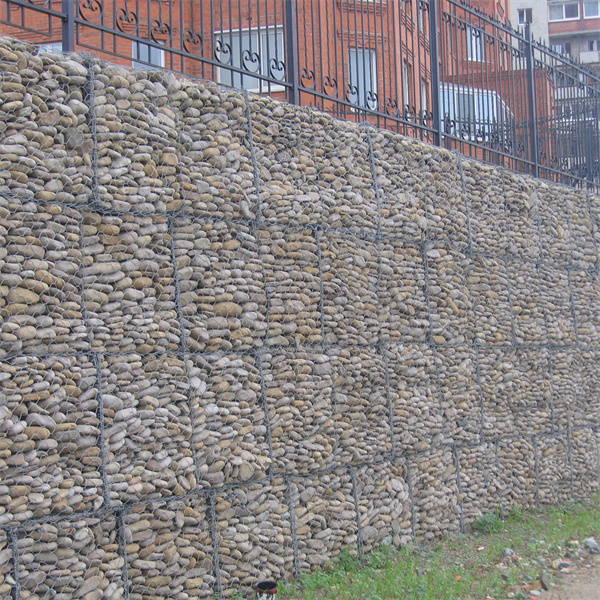12 月 . 31, 2024 06:09 Back to list
Understanding the Applications and Benefits of China Stone Cage Nets in Construction
The Significance of China Stone Cage Nets in Modern Engineering and Landscaping
In recent years, the use of stone cage nets, popularly known as gabions, has gained immense popularity in various fields, particularly in civil engineering and landscaping. Originating from the Italian word gabbione, meaning big cage, gabions are essentially wire mesh containers filled with stones, creating a versatile building material that has been adapted for numerous applications.
Historical Context and Development
Gabions have a rich history that dates back to ancient times. Initially used for military purposes to create defensive barriers, these stone-filled cages have evolved into critical structural components throughout history. Ancient armies employed them to fortify defenses and protect against invasions. In modern times, their applications have broadened significantly to include erosion control, flood management, and aesthetic enhancements in landscaping.
Engineering Advantages
One of the most compelling attributes of stone cage nets is their ability to manage soil erosion. For engineers, gabions serve as an effective solution to combat the natural forces that lead to soil degradation. When strategically placed along riverbanks, slope faces, or in other vulnerable areas, these structures absorb water and redistribute pressure, preventing soil from being washed away. This is particularly crucial in areas prone to heavy rainfall or flooding, where loose soil can lead to significant environmental damage.
Moreover, gabions provide excellent drainage due to the gaps between the rocks within the cages. This drainage capability reduces water build-up, alleviating pressure on the surrounding soil and contributing to the longevity of nearby structures. This is particularly important in urban planning, where managing water runoff is essential for preventing flooding and maintaining the structural integrity of buildings and roads.
Aesthetic and Landscape Applications
Beyond their structural benefits, stone cage nets have found a place in landscaping and environmental design. Gardeners and landscape architects utilize gabions in various creative ways to enhance the visual appeal of outdoor spaces. These structures can be used to create retaining walls, decorative features, and outdoor seating areas. The natural beauty of the stone combined with the geometric shape of the cages offers a rustic, natural look that harmonizes with the environment.
china stone cage net

In addition, gabions can be employed as noise barriers along busy roads or in industrial areas. By filling the cages with larger stones, sound waves are absorbed and scattered, reducing noise pollution and creating a more serene living environment. This dual-purpose application of gabions highlights their role in urban design, merging functionality with aesthetics.
Environmental Impact and Sustainability
An increasingly important aspect of modern engineering and landscaping is sustainability. Gabions are often made from recycled materials, such as metal mesh, and they can be filled with locally sourced stones, drastically reducing transportation costs and the carbon footprint associated with building materials. Their use promotes the idea of utilizing natural resources wisely while contributing to the preservation of the environment.
Also, as time progresses, gabions will gradually integrate into the landscape as vegetation begins to grow within and around them. This transition not only enhances the natural beauty of an area but also supports local wildlife habitats, creating a balanced ecosystem.
Challenges and Considerations
While the advantages of stone cage nets are numerous, some challenges must be considered. Proper installation is critical to ensure their effectiveness. Engineers must account for factors such as soil type, water flow, and local weather patterns when designing gabion structures. Additionally, long-term maintenance is essential. Regular inspections are necessary to ensure structural integrity and address issues such as rust or displacement of stones.
Conclusion
In conclusion, the significance of China stone cage nets, or gabions, in modern engineering and landscaping cannot be overstated. Their effectiveness in controlling erosion, managing water drainage, enhancing aesthetics, and promoting sustainability makes them a vital asset in contemporary construction and design projects. As urban areas continue to grow and change, the innovative use of gabions will play a crucial role in creating resilient, beautiful, and sustainable environments. Embracing this age-old technique in a modern context reinforces the importance of looking to the past while innovating for the future. Thus, the revival and adaptation of gabions signify a step forward toward enhancing our interaction with the natural landscape.
-
hesco-gabion-baskets-for-coastal-erosion-prevention
NewsAug.22,2025
-
longevity-and-durability-of-river-rock-gabion-walls
NewsAug.22,2025
-
how-to-integrate-gabion-3d-walls-in-urban-planning
NewsAug.22,2025
-
reno-mattress-gabion-applications-in-civil-engineering
NewsAug.22,2025
-
how-to-install-wire-mesh-for-gabion-baskets-properly
NewsAug.22,2025
-
best-materials-for-filling-a-chain-link-gabion
NewsAug.22,2025
-
Wire Mesh Thickness Impact on Gabion Wall Load Bearing
NewsAug.12,2025






